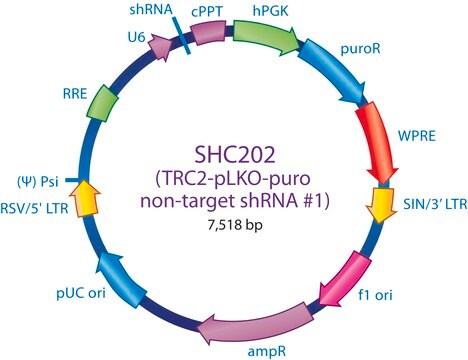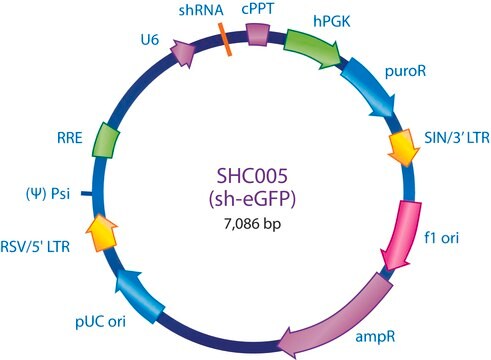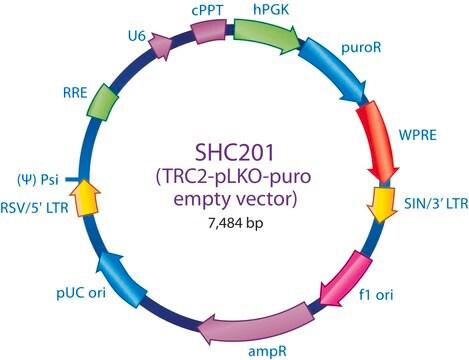SHC016
MISSION® pLKO.1-puro Non-Target shRNA Control Plasmid DNA
Targets no known genes from any species
Synonyme(s) :
MISSION® Control Vectors, negative control, negative shRNA control, non-target control, non-target shRNA, non-target shRNA control, shRNA control
About This Item
Produits recommandés
Niveau de qualité
Gamme de produits
MISSION®
Concentration
500 ng/μL in TE buffer; DNA (10μg of plasmid DNA)
Conditions d'expédition
dry ice
Température de stockage
−20°C
Vous recherchez des produits similaires ? Visite Guide de comparaison des produits
Catégories apparentées
Description générale
Application
- in tumor cells for multicolour imaging
- in human adult low calcium temperature keratinocytes
- in mouse embryonic fibroblasts, to study the biological functions of IP6K1 (inositol hexakisphosphate kinase)
- to study the function of Zac1 (zinc finger protein regulating apoptosis and cell cycle arrest) expression in astroglial differentiation
Informations légales
En option
Code de la classe de stockage
10 - Combustible liquids
Classe de danger pour l'eau (WGK)
WGK 2
Point d'éclair (°F)
Not applicable
Point d'éclair (°C)
Not applicable
Certificats d'analyse (COA)
Recherchez un Certificats d'analyse (COA) en saisissant le numéro de lot du produit. Les numéros de lot figurent sur l'étiquette du produit après les mots "Lot" ou "Batch".
Déjà en possession de ce produit ?
Retrouvez la documentation relative aux produits que vous avez récemment achetés dans la Bibliothèque de documents.
Les clients ont également consulté
Notre équipe de scientifiques dispose d'une expérience dans tous les secteurs de la recherche, notamment en sciences de la vie, science des matériaux, synthèse chimique, chromatographie, analyse et dans de nombreux autres domaines..
Contacter notre Service technique









